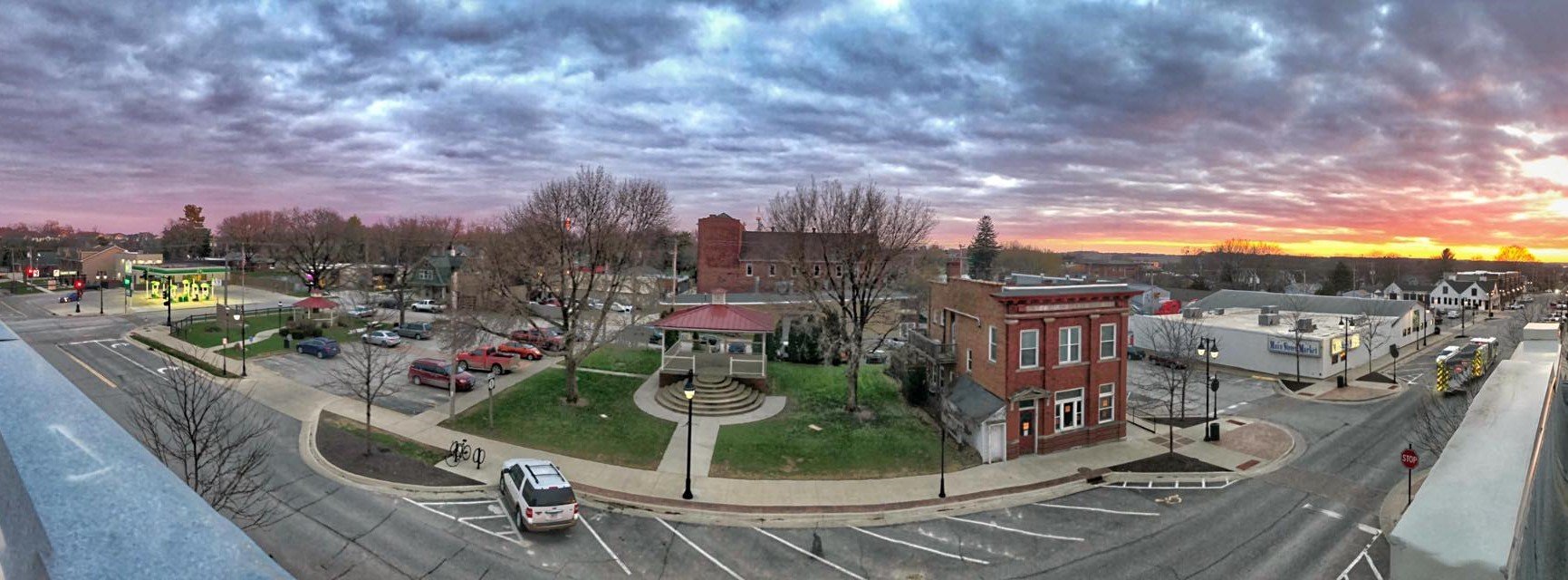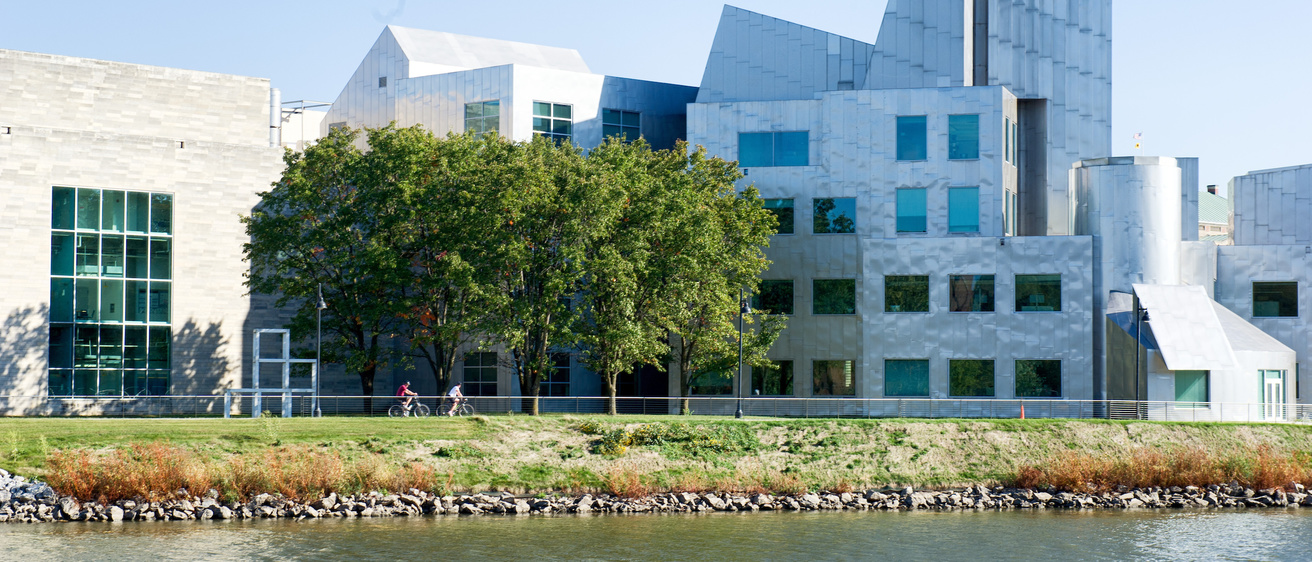Futurist Rebecca Ryan helping Project Better Together 2030 tackle challenges, create strategies for improvement in next decade
The following is a Cedar Rapids Gazette article published on October 22, 2021.
IOWA CITY — Johnson County elected officials and community leaders have taken the first step in imagining the county’s future — and how to improve it for all residents — through 2030
“Nobody owns the future,” said Rebecca Ryan, a futurist and economist working with leaders on the Project Better Together 2030 visioning process. “We’re planting some seeds today inside of this process, so that our 2030 we can have the kind of environment that we can be proud to leave our kids.”
Project Better Together launched in May 2020 to respond to effects of the COVID-19 pandemic. The initiative evolved this past summer to focus on long-term planning.
Project Together 2030 includes four groups — Iowa City Area Development Group, Iowa City Downtown District, Think Iowa City and Iowa City Area Business Partnership — along with leaders from local government, business, education and other areas of the county.
“We had some really good momentum built by partnering and working together,” said Nancy Bird, executive director of the downtown district. ” … It’s really a great time to come together and explore how we are more deliberate about the vision we want for Johnson County.”
The project has three main objectives: develop a data-driven perspective of the region’s future, include all voices and define priorities that are clear, shared and ambitious.
Ryan and her team are helping the group with planning and envisioning what the future for the county could look like. Ryan is from Wisconsin and has worked with about 40 communities, including Omaha, Asheville, N.C. and Nashville and Chattanooga in Tennessee. Ryan and her firm use “strategic foresight,” a process that helps plan for uncertainty, drive innovation and shape the future.
She has refined the process to include four main steps that go in a circle:
- Sensing: What’s happening?
- Imagining: What could happen?
- Defining: What do we want to happen and what will it take to get there?
- Doing: How can we get started and keep momentum?
After “doing” there is a moment to pause to think about if the actions taken are working or if there is need to adjust.
‘Bias toward the future’
About 80 community leaders gathered Oct. 15 to participate in the “Big Sort,” an activity led by Ryan and her team at the Courtyard by Marriott Iowa City-University Heights. Some individuals participated virtually.
Individuals had the chance to look over 36 different trends that predicted impacts on the county based on available data. There were five categories of trends: demographics, environmental, political, technology and economy. Trends included impacts of climate change, election laws, redistricting, economic growth and high poverty rates, to name a few.
The discussion at each table focused on how certain the group was that this trend will occur by 2030, and if so how much impact the trend would have.
Groups were asked to look at the trends they had put in the “completely certain, high impact” group and rank them from 0 to 10 based on likelihood.
The Big Sort showed Johnson County is more ready for the future than not, Ryan said, noting that there were more cards on the higher end of the scale.
The activity had a “bias toward the future,” Bird said, adding that the goal was to look forward at how different groups could work together toward this future instead of spending time talking about what has already happened.
Angie Jordan said she enjoyed hearing different perspectives on some of the topics and learn more about issues or challenges that she might not be as familiar with. Jordan is one of three chairs of Project Better Together 2030, along with ICAD President Kate Moreland and University of Iowa President Barbara Wilson.
The opportunity also allowed Jordan to raise topics that have come up through her grassroots connections, including integrating arts into neighborhoods, health care and affordable housing. Jordan is also a business owner and president and co-founder of the South District Neighborhood Association.
In a statement to The Gazette, Wilson said the public university has a “special responsibility to be a partner in planning the future of this region.”
“The vibrancy of Iowa City and the surrounding communities is critical to attracting and retaining the best talent for the University of Iowa,” Wilson said, adding that faculty, staff and students can step in to help solve some of these issues.
The activity showed that the community is engaged in the plans for the future, with health, well-being and equity “at the forefront of our values,” Wilson said.
Moreland noted the demographics data and the census data.
One of the trends signaled growth in international and domestic migration. Thousands of new international residents could move to the county through 2030, which could increase demand for housing and language programs.
As these changes are predicted to happen, Moreland said it’s important to also address needs from a workforce standpoint and make sure the population growth has “access to the skills for the jobs that we have.”
“We need to make sure we’re matching those two things up,” Moreland said.
‘Only the beginning’
The Big Sort activity was just one step of the visioning process, Bird said. The work will continue into next year, Jordan added.
A priority of Better Together 2030 is to include voices of individuals who might have been left out of previous efforts, including immigrants, children and the BIPOC — Black, Indigenous, people of color — community.
“We need to be more deliberate about making sure that all voices are at the table,” Bird said.
There will be opportunities to get feedback, such as surveys, focus groups and neighborhood outreach, Bird said. There also will be targeted outreach “to find ways where everyone feels like they’re part of this community,” Bird said, adding that the individuals who participated in the Big Sort activity can help serve as liaisons.
“That’s something that I’m excited to continue work as a tri-chair in bringing more of the organizational voices and individual voices and who weren’t here, and quite frankly, haven’t been here ever,” Jordan said about the outreach.
Work continues through next year
Ryan and her team will look through the top trends and publish the results on the Better Together 2030 website, icareatogether.com/better-together-2030. Everyone is invited to share feedback and reflections, Jordan said.
“Our commitment here is to be transparent and inclusive,” Jordan said.
These trends will then be taken to create two scenarios for the county’s future. An “expectable future” and an “aspirational future” will be created as part of the “imagining” phase, Ryan said.
The scenarios are expected to be completed in November. The scenarios and input will be used to create a plan that can begin to start being implemented to bring Johnson County close to the future. Weather might impact public input, Ryan said, but the hope is to have the plan completed early spring 2022.
Community members will then come together to start implementing some of the initiatives.
“The ‘doing’ process helps marry what we say we want in 2030 to what we can start doing right now,” Ryan said.
Moreland said she’s most excited about building relationships across different organizations and groups.
“We have to work collectively to make change,” Moreland said. “ … We haven’t really done anything like that before in our community that I can remember. So I think now is a perfect time to really spend that time, get good feedback, get the input so that we’re building a shared vision.”
Comments: (319) 339-3155; izabela.zaluska@thegazette.com





